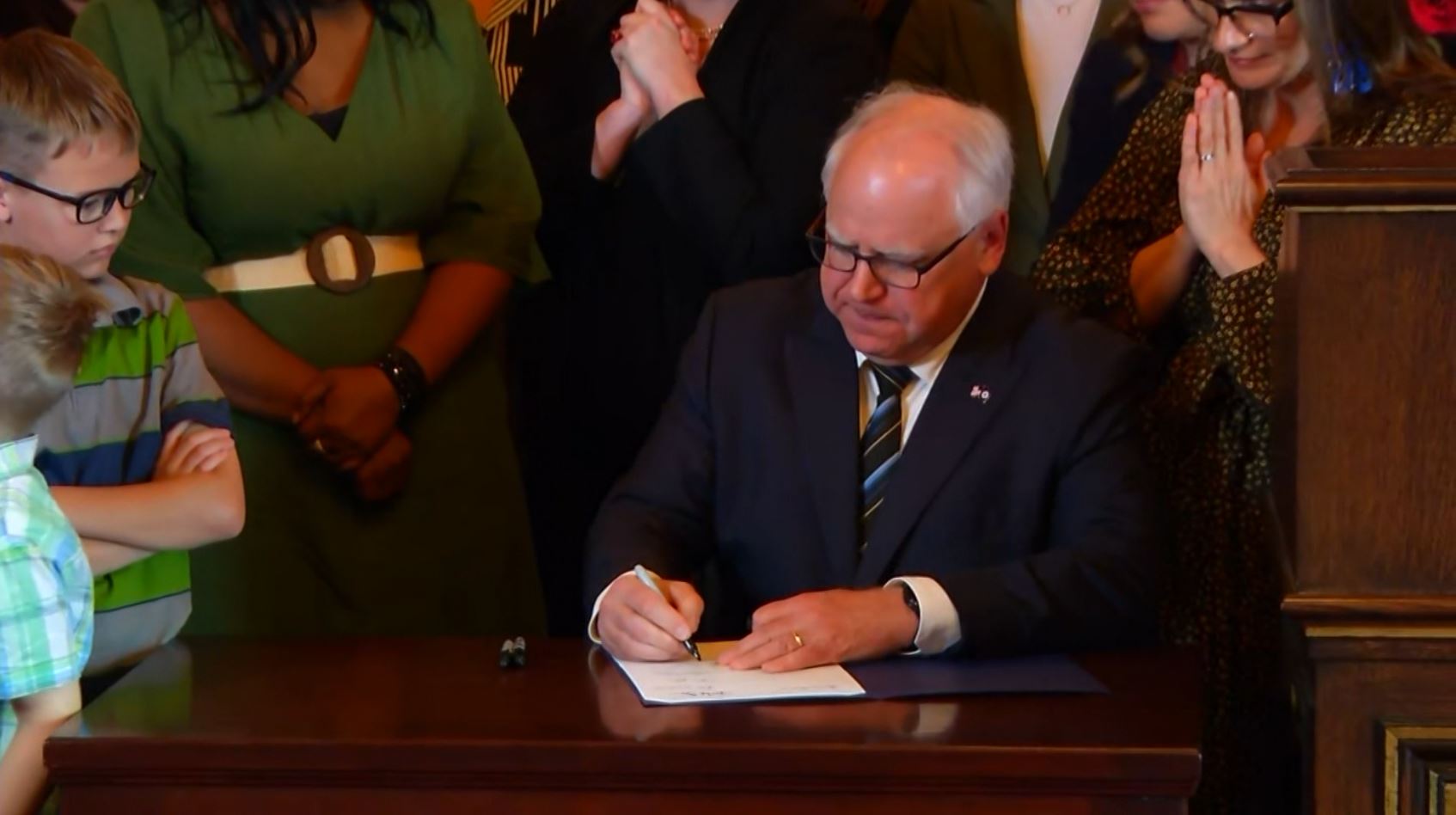Gov. Walz signs Paid Family and Medical Leave Act into law
Governor Tim Walz signed the Paid Family and Medical Leave Act into law Thursday afternoon. The bill gives Minnesota workers up to 12 weeks of paid time off for a serious medical condition or pregnancy, or to care for a family member. Individuals can claim a maximum of 20 weeks of paid leave in a single year.
“Paid family and medical leave is about investing in the people that made our state and economy strong in the first place,” Governor Walz said in a statement. “By signing paid family and medical leave into law, we’re ensuring Minnesotans no longer have to make the choice between a paycheck and taking time off to care for a new baby or a sick family member. For the sustainability and health of our workforce and the future of our economy, I’m proud to sign this into law.”
The benefit distributions, premium collection, and small business grants will become available in January 2026.
“Everyone deserves paid time away from work, to heal, to grow, and to live,” Lt. Gov. Peggy Flanagan said at the signing ceremony. “This time is not optional. It’s not a nice-to-have. It’s a must-have if we truly are going to be the best state in the country to raise a family.”
The bill received a party-line 68-62 vote on May 17 in the House, with all Republican representatives voting against it. Then on May 18, the Senate followed suit, approving the bill 34-32.

Gov. Tim Walz signs the Paid Family and Medical Leave Act. (Thursday, May 25 WDIO)
Republicans have opposed the measure, arguing it burdens employers with a new tax and that many workplaces already offer their own version of long-term paid leave.
The program will be funded through a 0.7% payroll tax for employers participating in both the family and medical benefits and will be disbursed through a new division of the Minnesota Department of Employment and Economic Development. A one-time $668 million infusion would get the program off the ground until the payroll tax can sustain it long-term.
According to the Main Street Alliance of Minnesota, only 17% of the U.S. workforce have access to paid family leave through an employer, and less than 40 percent have access to personal medical leave.
On Thursday, Governor Walz and Lieutenant Governor Peggy Flanagan were joined by House Speaker Melissa Hortman, Senate Majority Leader Kari Dziedzic, legislators, and advocates, including Minnesota AFL-CIO President Bernie Burnham and Doran Schrantz, executive director of ISAIAH and Faith in Minnesota.
Chapter 59, House File 2 creates a state paid family and medical leave program which will provide partial wage replacement for 12-20 weeks of leave in a 52-week period for medical leave, bonding, or caring for a family member.